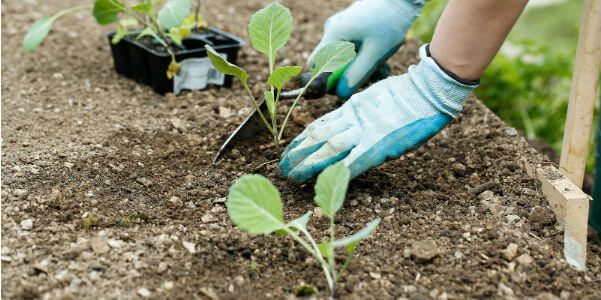
Gearing Up for Spring Planting
Spring planting can be tricky. The weather is starting to warm up, but you can’t rule out the occasional cold snap. So you have to find the right balance of which crops to plant so they thrive in time for a summer harvest. Here are several tips for things to start planting now for feasting when the sunny season starts.
Equinox Eating
In general, planting in Spring should include semi-hardy vegetables, similar to what you’d plant in late Fall. Semi-hardy vegetables are able to handle light frosts (typically temperatures between 29 to 32 degrees F).
There are other veggies you can start as seedlings inside and move them outside when the weather is right, such as beets, carrot, cauliflower, celery, cabbage, lettuce and gourmet salad greens such as radicchio. Whatever you choose, you’ll want varieties that can withstand Spring’s temperature variations.
Mini Hoop House
If your local climate is unpredictable, consider a mini hoop house or greenhouse to shelter your tender Spring greens. Under the protective canopy, the soil retains heat even under conditions of cold or frost. This gives your veggies a growing boost. Of course, you’ll need to carefully monitor irrigation and make sure plants get the ventilation they need to avoid mold or rot.
 Inside Out
Inside Out
If you don’t have room for a greenhouse, a kitchen windowsill may provide the perfect growing spot for seedlings. Once they are well established, transplant them when the temps are warmer.
Tomatoes and Peppers – Get a jump on the growing season and start growing tomato and peppers indoors. Typically it will take between six and eight weeks for them to grow to a stage where you can safely transplant them. We suggest you try Brandywine and Cherokee Purple tomatoes, as well as California Wonder peppers.
Onions – January and February is also a good time to start seeding onions inside. We suggest you try the Candy Hybrid onion, or the Yellow Sweet Spanish onion. Wait until they’re around 6 inches tall; then cut approximately 3 inches from the top. Continue this practice until they’re ready to transplant.
Herbs – Herbs are one of the most popular plant varieties to grow during winter. You can try to grow any of the five more popular herbs; Basil, Chives, Oregano, Parsley, or Thyme.
Spring is just around the corner. What veggies will you grow this season?





[…] The moon calendar is based on the different phases of the moon, and did you know that you can plant for spring according to this […]